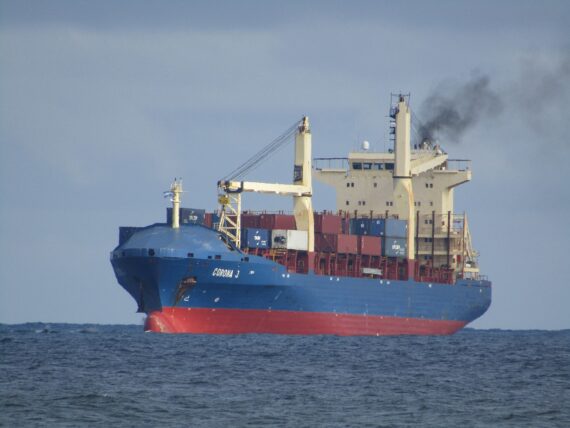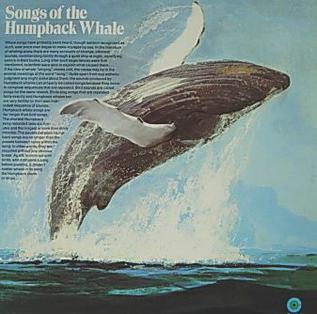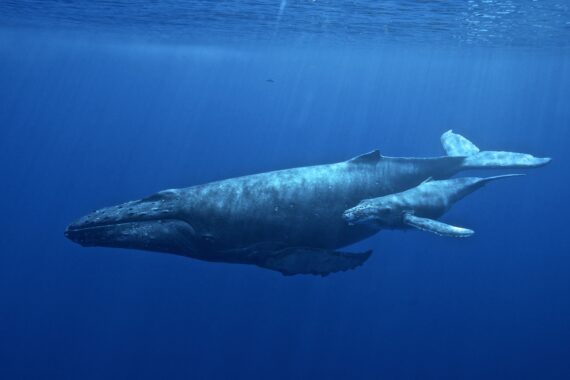You’ve probably heard recordings of whale song. The beautiful, haunting notes are often heard on wildlife documentaries and are even used with music for relaxation. But what is whale song, why do whales sing, and what impact does ocean noise potentially have on whales and other cetaceans?
‘Songs of the Humpback Whale’
Whale song had been recorded in the 1960’s, but people worldwide became more aware of it when an album called ‘Songs of the Humpback Whale’ was released in 1970. Created by a bio-acoustician – someone who researchers the sounds animals make, how they detect them and what that means – called Roger Payne, it had an incredible impact on people’s understanding of and feeling towards whales.
It was perhaps because humans understand the power and beauty of song, that it meant that people could quickly understand that whales were complex animals with their own language and culture, expressed through their song.
The album sold in massive numbers, raised money for charity, but perhaps most importantly it galvanised action, sparking the ‘save the whales’ movement and ultimately leading to a halt to whaling in most countries around the world.
What is whale song?
Whale ‘song’ is what we call the noises that whales (and other cetaceans) make. Because senses like sight and smell, which many land animals use, don’t work as effectively underwater, sound is an incredibly important medium for communication, for finding food, for sharing information and much more.
The song whales produce is a pattern of vocalisations and in species like humpback whales can be incredibly complex, combining long and changing notes in many pitches, plus clicks, snorts and other noises. The song is made up of units of sound, combined into phrases which are sung over and over again, gradually changing and evolving with time. This is also why their vocalisations are often called ‘songs’; human music is also often made up of basic sound phrases that are combined and repeated to create a song, like verses and chorus.
Three humpback whales heading north, cape solander, by drone – by Adam Fish
What do whales sing?
What is the purpose of whale song? It’s certainly a way for whales to communicate with each other, but we don’t yet understand what it is that they are saying. Researchers think that some singing is males and female singing to each other to find mates or communicate fitness. Other researchers have detected mother whales making a noise that seems to be similar to the way human mothers ‘coo’ to their children, making a soothing noise to their young.
There also seems to be slight differences and variations between the songs sung by whales in different family groups, known as pods. That could mean that each pod has, in effect, its own language and its own culture.
How do whales sing?
When us humans sing, we use air we push out from our lungs which causes our vocal cords to vibrate, producing sound. But since whales are under the water, they can’t sing in the same way.
Or can they? While most cetaceans rely on clicks and bark noises, the whales that sing – humpback whales, minke whales, bowhead whales and some others – do seem to use vocal cords and the movement of air to produce their singing sounds. They too have vocal cords, and move air across them to produce sound, but crucially they don’t loose air when they do that like humans do. Instead they move air from storage sacs inside their body back and forth, so they can sing without ever having to take a breath.
The mechanism is still a little mysterious, but more and more is being learnt about these incredible animals every day.
The image above is a spectrogram; this is a way of visualising sound, and alternative to the sound wave that most people are familiar with. The coloured areas represent different pitches and sounds, and the more colourful the image with less black space, the more complex the sound is.

Spectrogram of Humpback Whale Song, by Spyrogumas. Creative Commons Attribution-Share Alike 3.0 Unported
Threats to whales and their song
It’s easy to think that the oceans might be a quiet space, since if you put your head under water sounds can seem muffled and strange. But that’s because our human ears are really evolved to listen to sound underwater, and in fact sound travels about four times quicker in water than air.
If you could listen like a whale can, you’d hear an ocean full of sounds – whales singing, dolphins clicking, and lots of other animals making noise.
But you’d also hear the noise humans make in the oceans, and humans make an awful lot of noise. There’s the engines of boats and submarines. There’s the sounds from drilling rigs extracting oil and gas. There is the sonar noise used by submarines and other military vessels which can be incredibly loud. This makes the oceans a lot louder then whales and dolphins evolved to deal with – imagine being stuck in a very loud, busy area, and there’s nowhere you can go to get some peace and quiet; it can be incredibly stressful, and it’s the same for whales.

Cargo ship Corona J by Luis Alfredo Romero, Creative Commons Attribution-Share Alike 4.0 International
This noise is causing whales and other cetaceans to change their behaviours. They may dive deep more often or less efficiently, using up more of their energy doing so. And especially loud noises, like military sonar or deep sea mining, can actually physically harm the whales.
We need to be aware of the impact the noise we make has on the marine environment, because noise pollution for the animals that live there is as dangerous as other types of pollution we are more familiar with.
What can you do?
Firstly, learn more about whales and their incredible song. The more people who are aware of these majestic and mysterious animals, the more people will speak out to help protect them and the environment they live in.
You can also campaign for changes in the law and from other companies who operate at sea. So for example, in asking for shipping to reduce speeds, which reduces the amount of noise big ocean-going ships produce. There are also some new technologies that could help quieten marine engines.
And of course calling for a halt to deep sea mining and oil extraction has benefits for all marine life, as well as reducing ocean noise.
Write to your politician asking what the government is doing to help reduce marine noise pollution, or you might even want to set up a campaign to bring more voices to
Read more:
- Underwater noise pollution is impacting whales – The Natural History Museum
- Scientists discover how some whales can sing while holding their breath underwater – Smithsonian Magazine
























